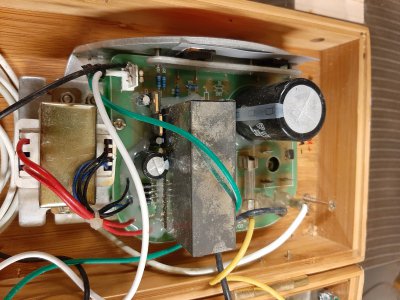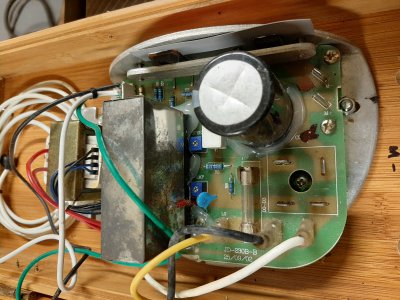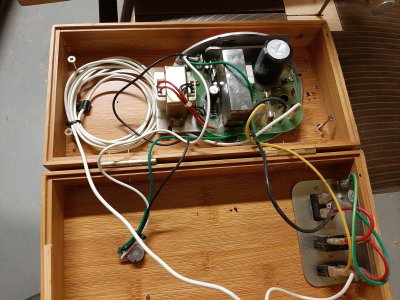Hi there,
I have a nice old Inca planer thicknesser that I have been slowly fixing up over the years. Originally these come with one motor that runs both the cutterblock and, through a system of gears to slow the RPMs, the feed rollers. On the machine I got the gears were unfortunately all bust up, being one of the only plastic parts of this machine. I decided to bypass the gears and try run a treadmill motor directly to the pulley that drives both feed rollers. I got it installed and wired with the original treadmill circuit board (a PWM if I remember correctly?) and a potentiometer for speed control.
It runs perfectly well except that even at it's very slowest it is far too fast for planer feed rollers. (It would be excellent as a wooden board cannon though, shooting them across the workshop! )
)
Is there any way to slow this motor - using a potentiometer that only works for the lower end of the spectrum (if these exist??) or is my goose cooked on this project? There's not enough space in the cabinet of the machine for a countershaft.
Also, will the motor even have enough torque at this low a speed?
Is it time to fork out on a 3 phase motor and VFD?
Inca don't exist anymore, so parts are hard to find and expensive if you can find them.
Any help would be appreciated!
Thanks,
Kevin
I have a nice old Inca planer thicknesser that I have been slowly fixing up over the years. Originally these come with one motor that runs both the cutterblock and, through a system of gears to slow the RPMs, the feed rollers. On the machine I got the gears were unfortunately all bust up, being one of the only plastic parts of this machine. I decided to bypass the gears and try run a treadmill motor directly to the pulley that drives both feed rollers. I got it installed and wired with the original treadmill circuit board (a PWM if I remember correctly?) and a potentiometer for speed control.
It runs perfectly well except that even at it's very slowest it is far too fast for planer feed rollers. (It would be excellent as a wooden board cannon though, shooting them across the workshop!
 )
)Is there any way to slow this motor - using a potentiometer that only works for the lower end of the spectrum (if these exist??) or is my goose cooked on this project? There's not enough space in the cabinet of the machine for a countershaft.
Also, will the motor even have enough torque at this low a speed?
Is it time to fork out on a 3 phase motor and VFD?
Inca don't exist anymore, so parts are hard to find and expensive if you can find them.
Any help would be appreciated!
Thanks,
Kevin




